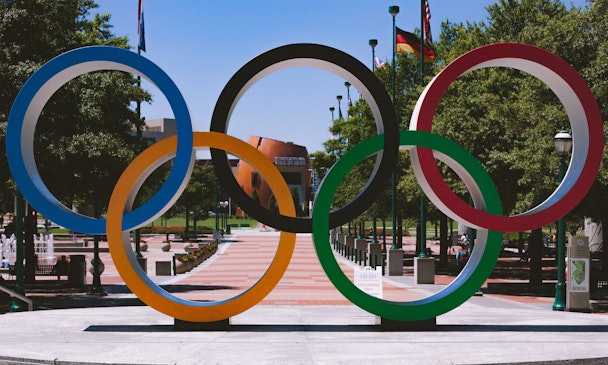The Olympics is not living its brand purpose
The Olympic rings are intended to be a symbol of connectivity, diversity and equality. But controversies around limitations on athletes’ uniforms call into question how deep that purpose goes, argues Sophie Lutman, executive creative director at Siegel+Gale. Now’s the time to make firm the Olympic commitment to openness and diversity – and reap the rewards of genuine inclusion.

Siegel+Gale considers why modernizing Olympic standards and guidelines could serve to improve its brand
International Women’s Day (IWD) and the Winter Olympics have come and gone. For IWD, we saw companies share inspirational words and support online. It’s time we reflected on how far we’ve come in the push for gender equality. Unfortunately, it seems we have not come far enough. Take sexualization, often used as a sales tool in sports: ring girls in boxing, Sports Illustrated, cheerleaders in American Football (with the first male cheerleaders in the NFL joining only in 2020) and, until 2018, grid girls in Formula One.
Speaking of the Olympics, most people believe part of equality is freedom of choice – but sometimes, ‘choice’ may be a stretch. In 2021, the women’s Norwegian beach handball team was fined €1500 for ’improper clothing’ when they competed in shorts at a European semi-final event in Bulgaria. Although not an Olympic sport, parallels can be drawn with some of the recent controversies surrounding the Games, with similar controversies in beach volleyball.
Since 2012, female athletes have had the option to wear bikinis, one-piece suits, shorts or full-length suits when competing. Looking at the uniforms’ description in the FIVB’s official guidelines from 2019, we see clear differences in the language used in rules for male and female athletes. While men’s shorts must “not be baggy,” women’s shorts must “be a close fit.” While men’s tank tops must “be with open arms,” women’s “must be with deep cutaway armholes on the back, upper chest and stomach.” This language matters.
The 2020 (held in 2021) Tokyo Olympics saw its fair share of controversy and criticism, with the president of the Olympic Organizing Committee Yoshiro Mori and creative chief Hiroshi Sasaki forced to resign following sexist comments. Such incidents are an extension of previous occurrences, such as at London 2012 when it was suggested that women boxers should fight in skirts to make it easier for the audience to distinguish them from male boxers.
Every time we see controversies such as soul caps being banned in swimming, an athlete told to wear less or attempts to strong-arm another into covering up, autonomy is removed, rights are suppressed and stereotypes are reinforced. Stereotypes alone discourage diversity in competition and make sport poorer through its absence.
Why is this such an issue, specifically for the Olympics?
What does the Olympics stand for?
The Olympics website clearly sets out that the organization and the Games exist “to contribute to building a peaceful and better world by educating youth through sport practiced without discrimination of any kind and in the Olympic spirit, which requires mutual understanding with a spirit of friendship, solidarity and fair play.” While it may say all the right things, it’s clear that currently this brand purpose does not align with some of the actions of Olympic representatives.
This disconnect is not only between the organization and its purpose, but also between the brand and its audience. As customer and broader audience expectations for brands increase, it’s ever clearer that organizations are expected not only to stand for something, but to demonstrate that stance authentically.
Purpose
“Where your talents and the needs of the world cross, there lies your vocation.” This quote from Aristotle sums up the idea of brand purpose: it’s why we get out of bed in the morning, or why an organization exists. Purpose is a brand’s guiding light, the defining thread that runs throughout an organization. When deeply implemented, it can help stakeholders across the entire organization to make decisions on both a macro and micro level.
Purpose is not created but uncovered – based on the single core and authentic truth of an organization. It can also help to identify what social causes a brand can credibly align with, and what conversations it should steer clear of.
The key here in regard to the Olympics is authenticity. I’m confident that individuals in the International Olympic Committee are not only aligned with the brand purpose, but also inherently believe in it. Perhaps, though, the purpose has not been integrated as deeply as it needs to be, making it challenging to run authentically throughout the organization. The media coverage around recent blunders provides a clear indicator of this problem. But this is also an opportunity.
Missing an opportunity
How much damage has been done to Olympic brand equity? It’s hard to say. Four years between summer games is a long run, even with the internet’s ease of retrospective access. Still, the Olympics has an opportunity to embrace its purpose and publicly push to extinguish not only gender discrimination, but prejudice of any kind – no longer ever a passive spectator.
The IOC can be a champion of diversity, inviting people of diverse backgrounds to try new sports, looking to the future with an open mind, modernizing traditional sports and introducing new ones. Move the brand to the opposite side of these controversies and enable the athletes to perform at the elite level the audience wants to see – and do so without the distractions caused by conversations about what they can wear when they compete.
Content by The Drum Network member:

Siegel+Gale
Siegel+Gale is a global branding company headquartered in NYC. Our core expertise spans brand development, brand strategy, design, and customer experience.
Find out more
